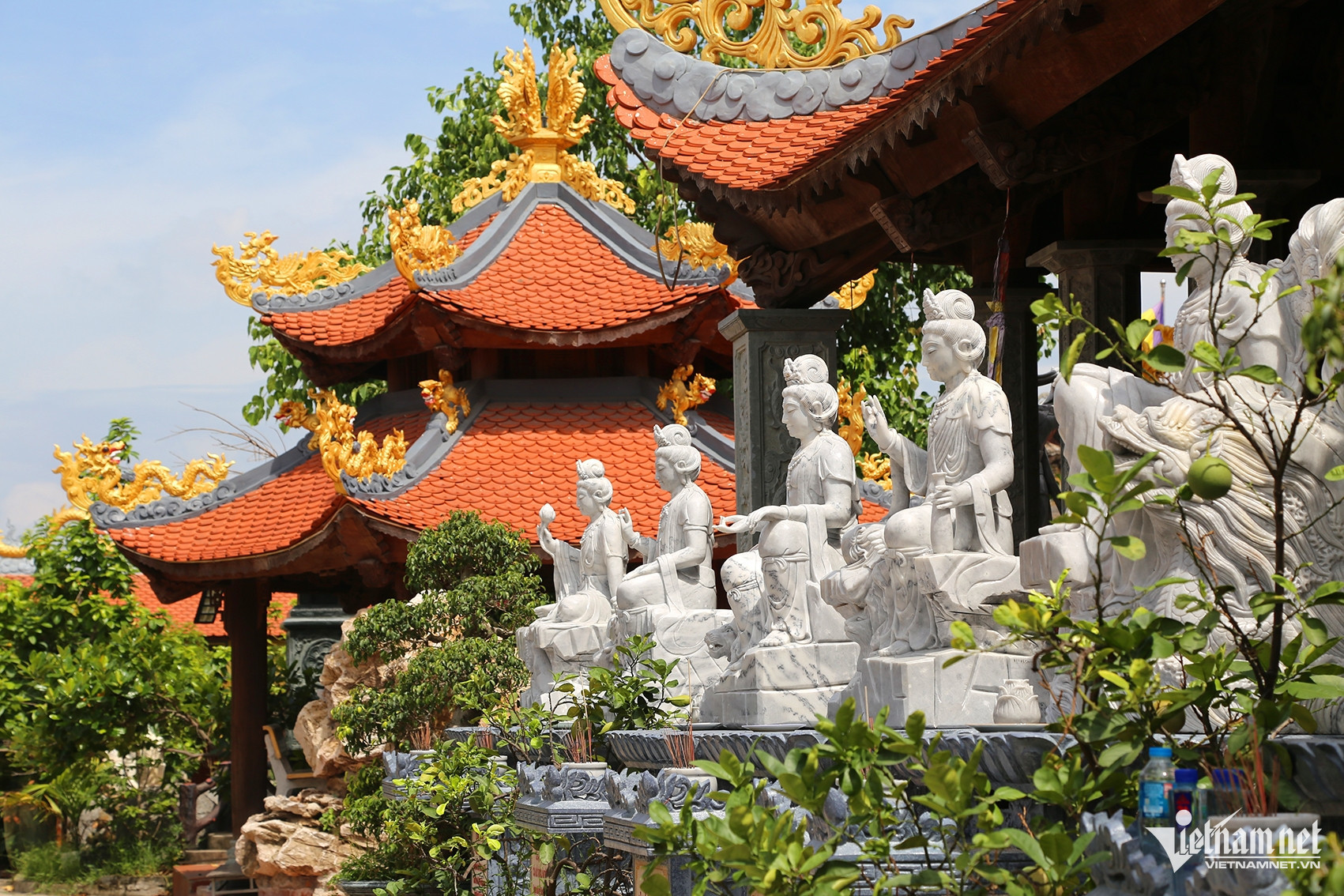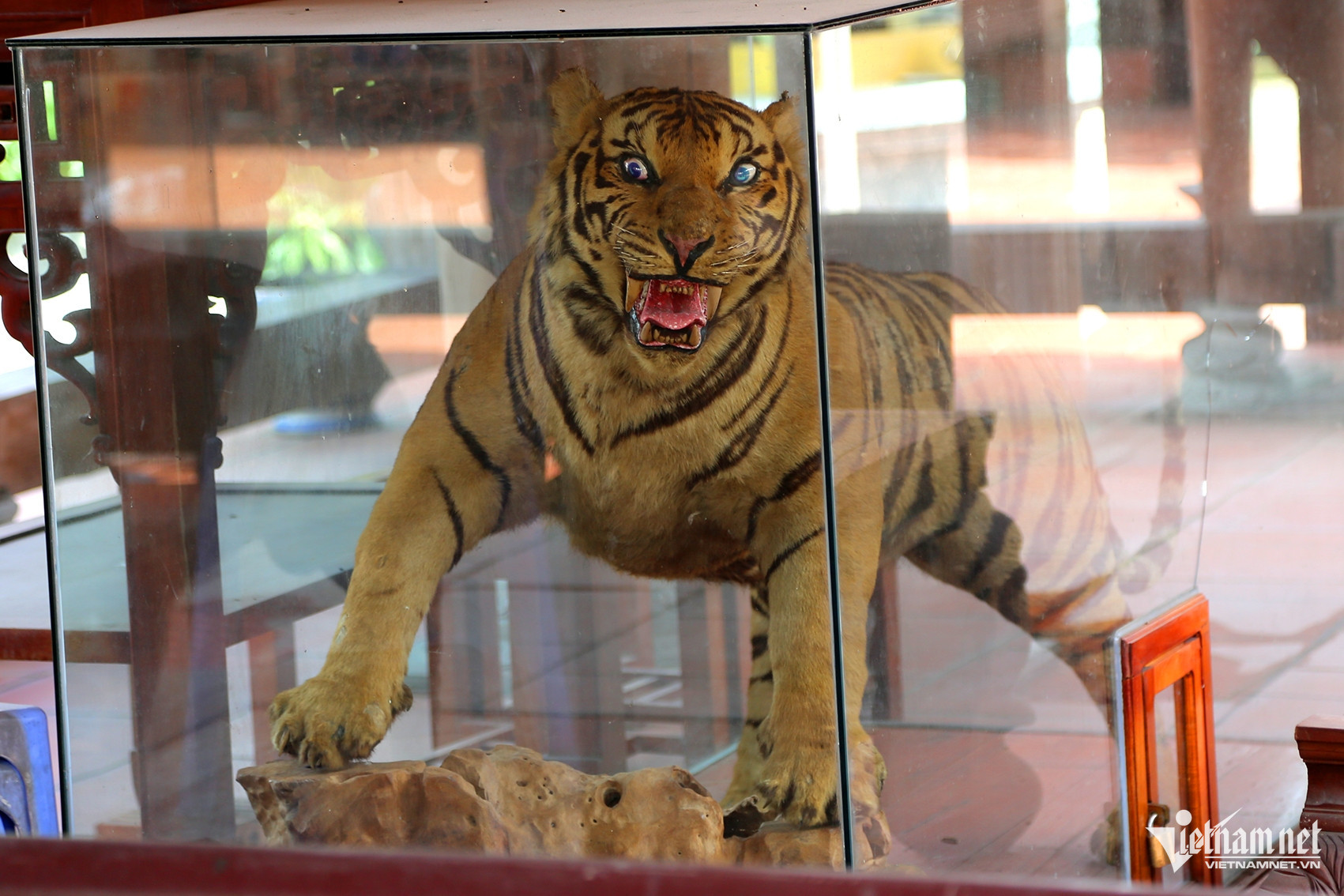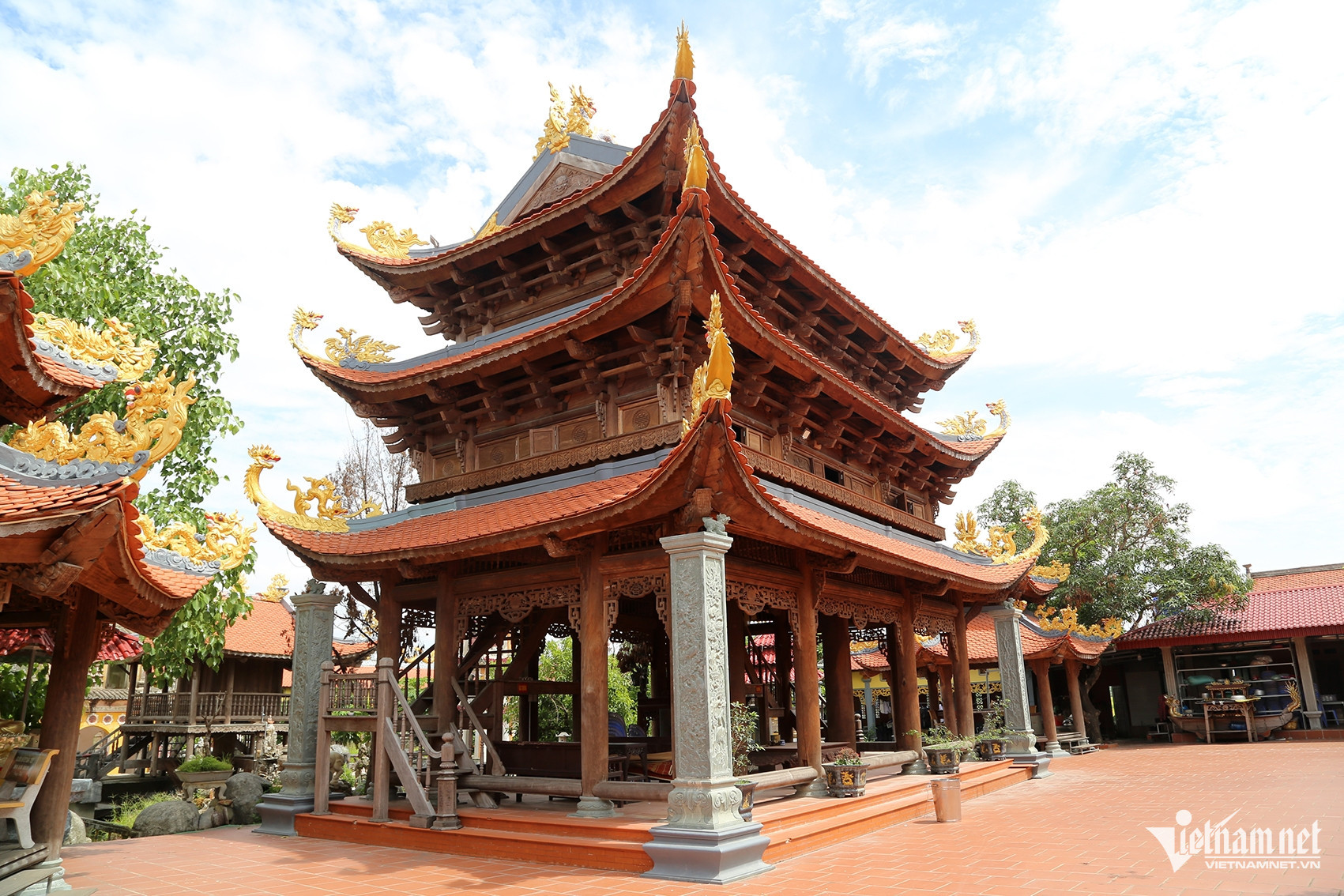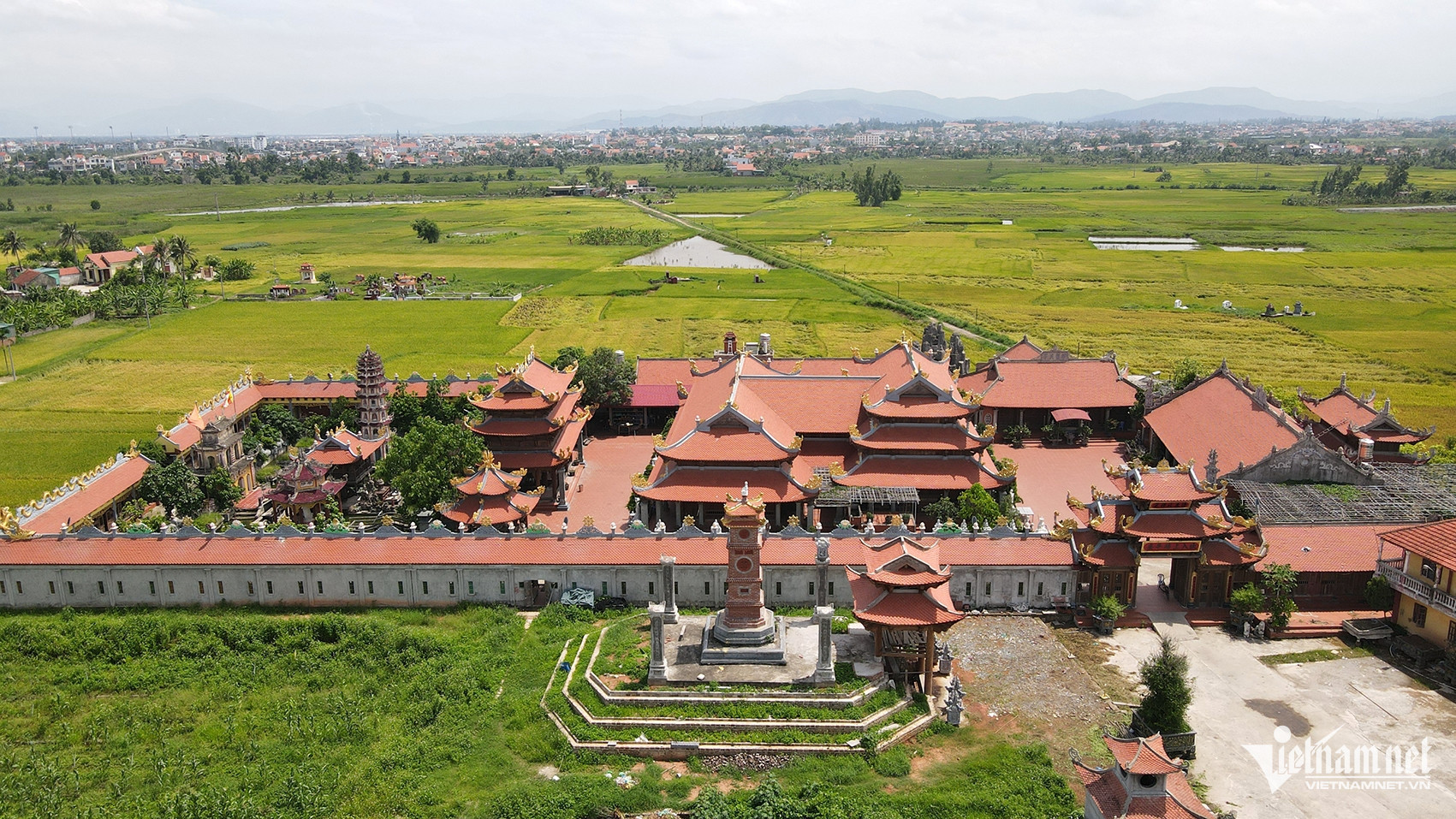The pagoda, located in Nam Hoa ward on Ha Nam Island, was originally constructed by the villagers of Dong Coc hamlet in the late 17th century. Formerly named Huong Dinh Phong Quang, the pagoda became popularly known as Chùa Giua Dong due to its unique location amid vast rice fields.
This tranquil temple is embedded in the peaceful rural life of Ha Nam Island, providing a scenic spiritual retreat.
Inside the pagoda’s grounds are two mounted tiger skins, preserved in glass cases. These figures are respectfully called “Ong Ho” by locals and are believed to have been brought to the temple in its early days as a small sanctuary.
According to Venerable Thich Thanh Tuan, the temple’s abbot, the tigers are made from real skin and fur, with cotton stuffing and a support frame. Despite being encased in protective glass, time has worn away parts of the hides.
Situated beside the historic Bach Dang River, the pagoda has endured natural wear and structural degradation over time.
To preserve the temple’s harmony with its natural surroundings and support local cultural and spiritual needs, Quang Yen town approved a renovation and preservation project. Spanning 21,671 square meters, the project was funded through community donations and social contributions. Restoration was completed at the end of January 2021.
The main hall was reconstructed in the Ly Dynasty architectural style, covering 600 square meters and built with ironwood and monolithic stone. It features eight overlapping roofs and a layout of seven bays and two wings.
Additional structures include an ancestral worship hall, Mother Goddess temple, guesthouse, offering house, Arhat corridor, bell tower, one-pillar pagoda, votive paper tower, mountain shrine, eighteen Arhats pavilion, and auxiliary facilities for religious practices.
Beyond its main annual festival on the 9th day of the first lunar month, the temple also welcomes pilgrims and locals on the 1st and 15th days of each lunar month for worship and reflection.


 |
 |
 |
 |
 |
 |
 |
 |

